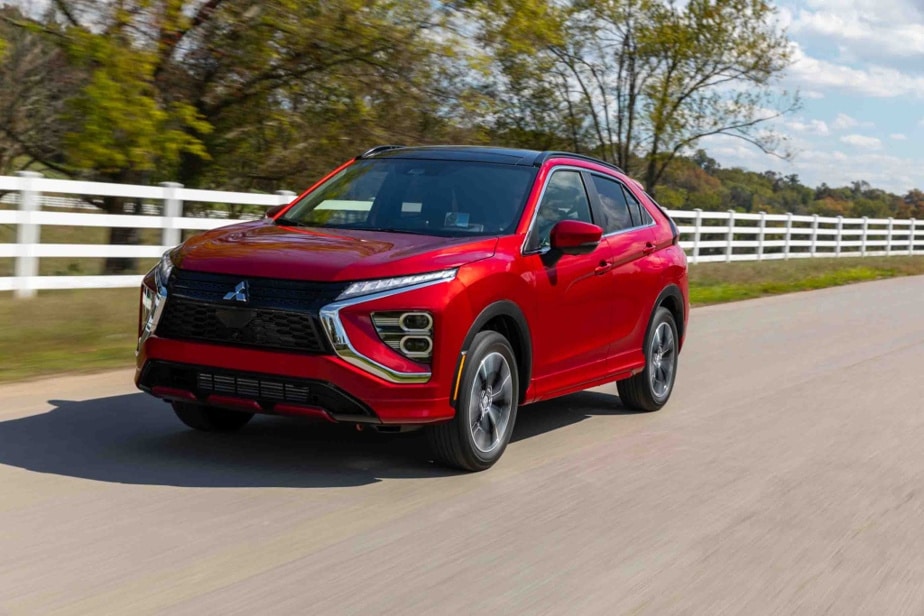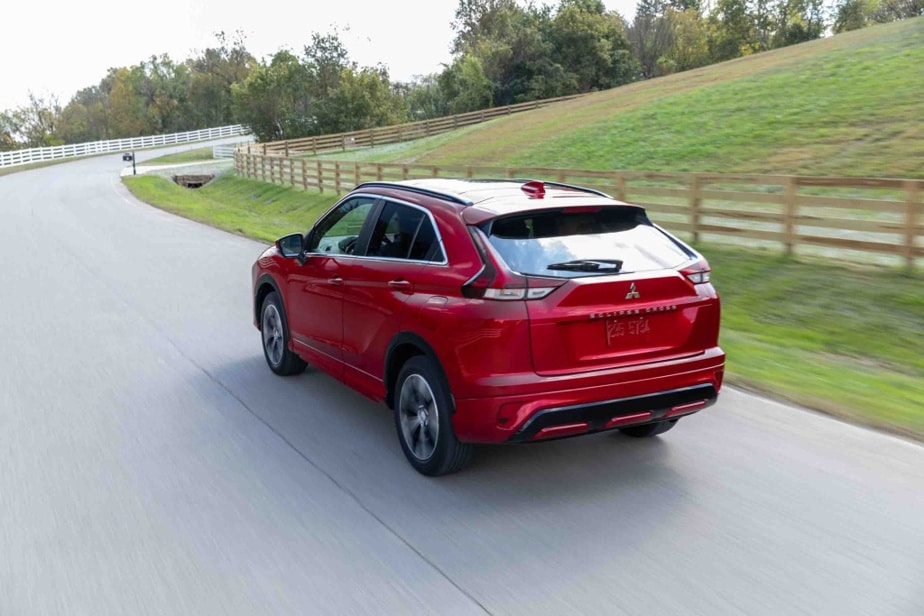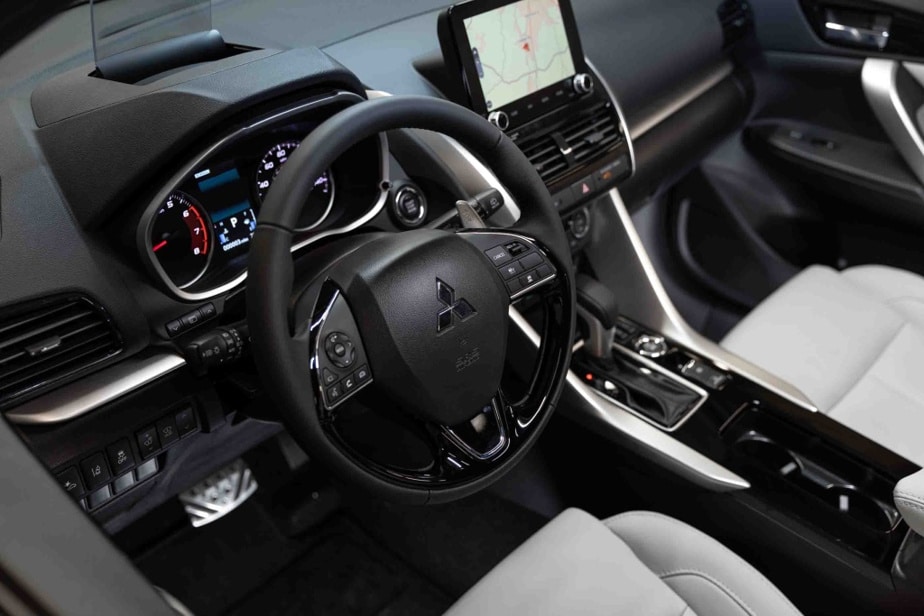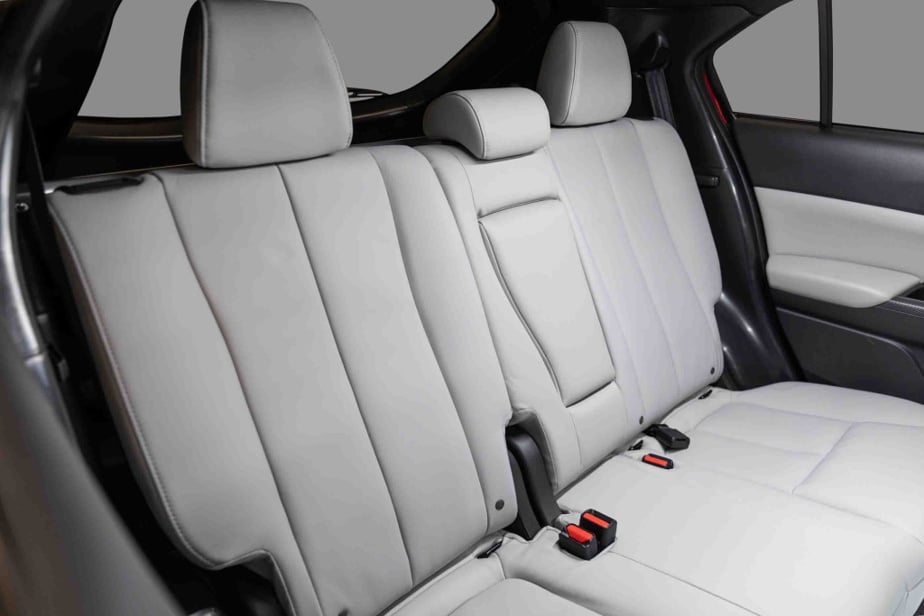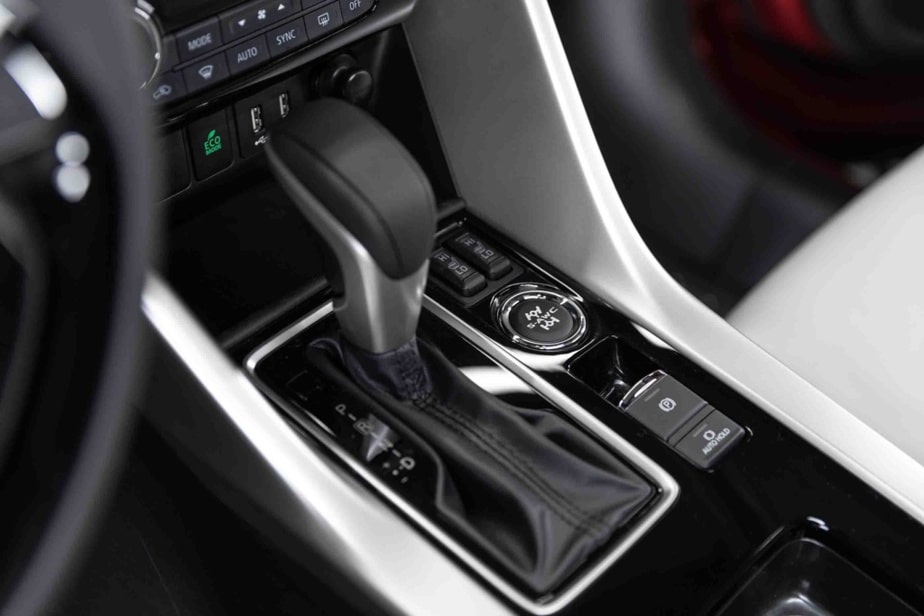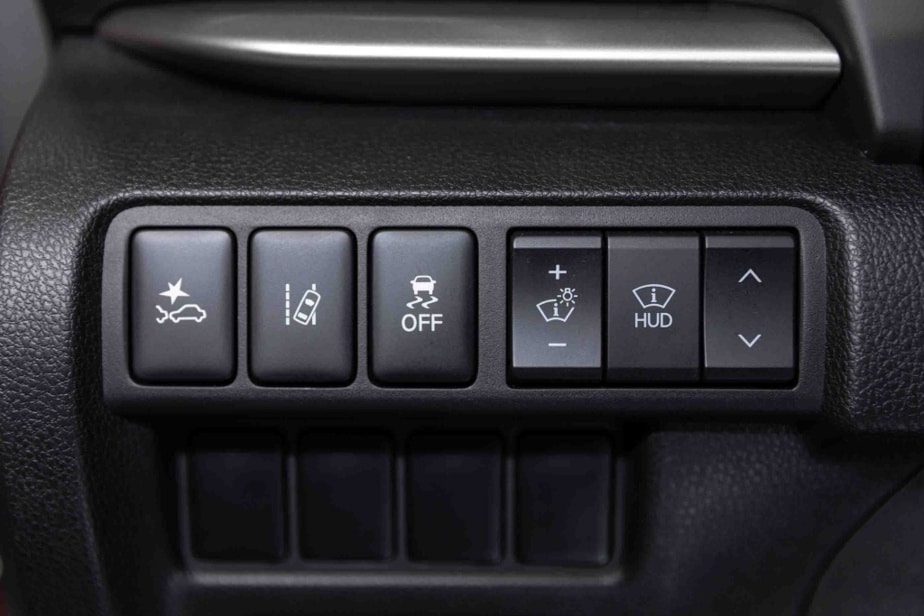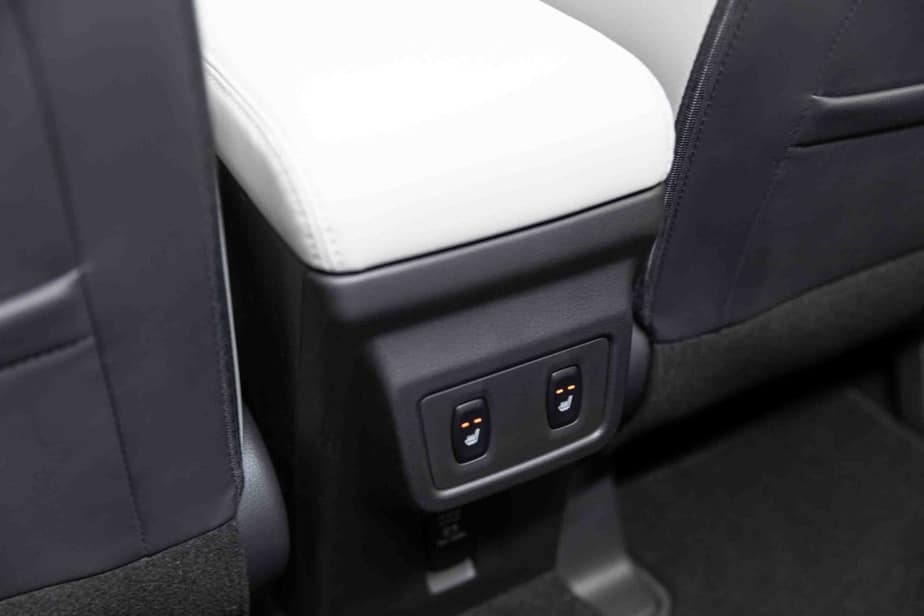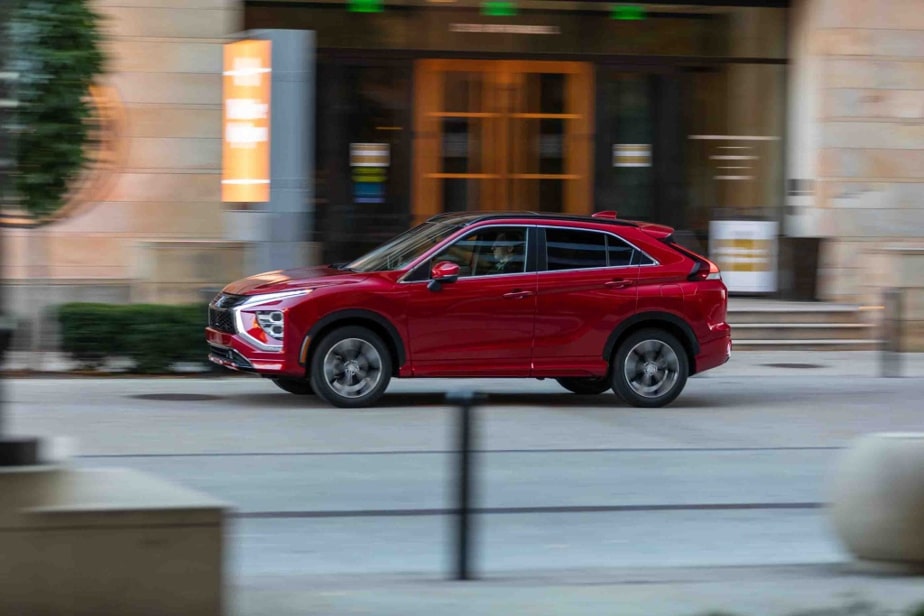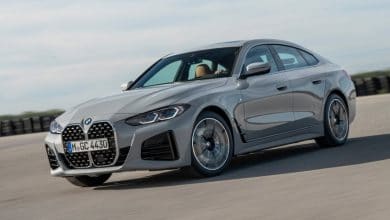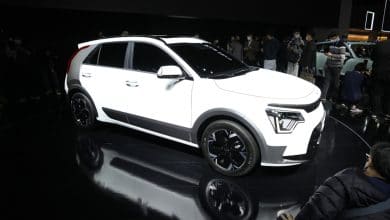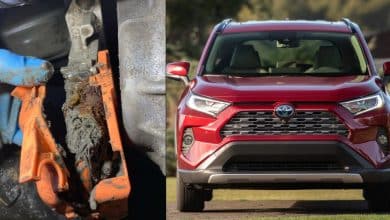Mitsubishi Eclipse Cross: diamond in the rough

Having given up correcting its weak points, the Mitsubishi Eclipse Cross prefers to take care of its strengths.
Contents
A place to defend
-
PHOTO PROVIDED BY MITSUBISHI
The platform of the previous Outlander served as the base for the Eclipse Cross.
-
PHOTO PROVIDED BY MITSUBISHI
The steering offers a rather imprecise touch of the road and the shock absorbers, a tad flabby, harm the rigor of the suspension in support in the curves negotiated at medium and high speed.
-
PHOTO PROVIDED BY MITSUBISHI
Regardless of the livery, the Eclipse Cross’ cabin is spacious, comfortable and unrefined…
-
PHOTO PROVIDED BY MITSUBISHI
The occupants of the rear seats will not fail to quibble over the acrobatics sometimes necessary to access it or to extract themselves from the bench seat.
-
PHOTO PROVIDED BY MITSUBISHI
Like Subaru, four-wheel drive is standard across the lineup.
-
PHOTO PROVIDED BY MITSUBISHI
The SE S-AWC version offers blind spot sensors, rear cross traffic alert and dual-zone air conditioning.
-
PHOTO PROVIDED BY MITSUBISHI
Detail of the Mitsubishi Eclipse Cross
-
PHOTO PROVIDED BY MITSUBISHI
The 1.5 L four-cylinder turbocharged engine lacks very average efficiency (acceleration, times and consumption) compared to competing engines from Nissan or Honda.
1/8
A (relatively) recent model, but threatened with marginalization in the face of the new Kia Seltos, Mazda CX-30 and Volkswagen Taos, the Eclipse Cross has no other objective than to arouse curiosity with its generous warranty, its all-wheel drive series and its exoticism. After all, Japanese-born Mitsubishi doesn’t have a blinding aura.
The history of Mitsubishi is punctuated by audacious, non-standard, sometimes unusual models. Some have been iconic cars like the Evo and others have disappeared quite quickly. Who remembers the Galant, Diamante and Endeavor? The Eclipse Cross could be added to this list, given its rather average commercial success so far, but some connoisseurs will see this model as a manifesto of Mitsubishi’s identity. The brand, it should be remembered, joined the Renault-Nissan Alliance in 2017, shortly before the release of the Eclipse Cross.
Concretely, this means that the future products of the three-diamond brand will be, in North America, essentially Nissans (the current Outlander is a good example) or, on the European market, Renaults. Regardless of the origin, Mitsubishi promises to insert its DNA.
With the means at hand
Due to a lack of financial resources, the Eclipse Cross was partially designed with the means at hand. Thus, the platform of the previous Outlander (the current one is based on a chassis identical to that of Nissan’s Rogue) served as the base for the Eclipse Cross. A choice dictated by criteria of reliability, malleability (installation of a rechargeable hybrid system, unfortunately absent from our regions) and cost price. At the heart of this somewhat old-fashioned architecture, however, is a mechanism in tune with the times: a 1.5 L turbocharged four-cylinder. Which, surprisingly, seems doomed to a career without a future.
Robust so far, this engine, the only one offered, suffers from a very average efficiency (acceleration, times and consumption) compared to competing displacements from Nissan or Honda. Never mind, this 1.5 L holds its rank at cruising speed. The performance of this engine would undoubtedly have been brighter (and less noisy too) if the continuously variable automatic transmission (CVT) had not been part of the trip.
Steering wheel in hand, the Eclipse Cross is the worry-free kind. The steering offers a rather imprecise touch of the road and the shock absorbers, a tad flabby, harm the rigor of the suspension in support in the curves negotiated at medium and high speed. By contrast, this Mitsubishi’s smooth ride contrasts with that of many generally stiffer rivals. Braking, easy to dose, is adequate, nothing more.
The piece de resistance of this model is its four-wheel drive mode. In this area, the Japanese firm has forged a real technical know-how over its victories in Paris-Dakar.
Like Subaru, four-wheel drive is standard across the lineup. This is an element to consider compared to the competition, which offers four-wheel drive as an option. Also to be taken into account is the quality of this all-wheel drive, which incorporates three modes (Normal, Snow, Rockery). In addition, the ground clearance of the Eclipse Cross allows it to circulate easily on less frequented paths, where the heavy bourgeois off-roaders, more sophisticated but less resourceful, must give up.
The choice to be made
Three versions are part of the Eclipse Cross catalog, but only one finds favor in our eyes: the SE S-AWC. This one appears the most homogeneous, the most balanced of all because of its standard equipment and the most competitive according to the asking price. It provides access to huge (and very Mitsubishi) paddles to manually select gears, and features a heated steering wheel, blind spot sensors, rear cross traffic alert and dual-zone air conditioning.
That said, regardless of the livery, the passenger compartment of the Eclipse Cross turns out to be spacious, comfortable and unrefined… hide the dullness of plastics. We will also find fault with this keyboard of keys taped against the front of the dashboard, not very accessible and difficult to read after dark. As for the occupants of the rear seats, some will not fail to quibble over the acrobatics sometimes necessary to access them or to extract themselves from the bench seat because of the arc drawn by the roof. Like what the style does not always marry the function.
Mitsubishi Eclipse Cross
Price range: $28,878 to $37,278
Visible in dealerships: now
Consumption: 9.3 L/100 km
WE love
- Proven reliability
- Gourmet chest
- Generous guarantee
We love less
- Smooth engine, but too greedy
- Austere and dated interior presentation
- Oscillating suspension
Our Verdict
Untapped potential.
Share your experience
In a forthcoming article, The Press would like to hear about your winter experience as an electric vehicle owner. Thanks for sharing it with us.
Technical sheet

PHOTO PROVIDED BY MITSUBISHI
Mitsubishi Eclipse Cross
Performance
Engine
- Turbocharged 1.5L L4 DOHC
- 152 hp at 5500 rpm
- 184 lb-ft of torque between 2000 and 3500 rpm
Performance
- Weight: from 1575 to 1590 kg
- Maximum towing capacity: 907 kg (with two passengers, 680 kg with five occupants)
- Ground clearance: 215mm
Gearbox
- Standard: Continuously Variable Automatic (CVT)
- Optional: none
- Drive mode: all-wheel drive
Tank and gasoline
Tires
Tank capacity, gasoline recommended
Dimensions
- Wheelbase: 2670mm
- Length: 4547 mm — Height: 1689 mm
- Width: 1806 mm (exterior mirrors excluded)
Controversy around a bezel
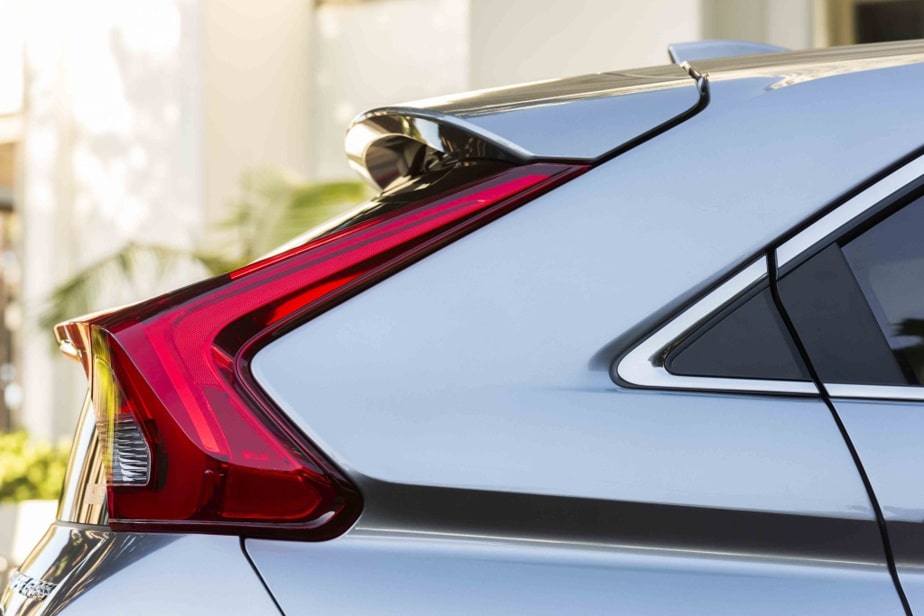
PHOTO PROVIDED BY MITSUBISHI
The stern of the Eclipse Cross in its early days
In its early days on the market, people who discovered it sometimes widened their eyes. We can understand why. The Eclipse Cross sported a dual rear window. This evoked specific memories of owners of Pontiac (Aztek), Mazda (MX-3), Honda (CRX and CR-Z) and even Maserati (Khamsin). Obviously, this element of style, an original time, frightened customers and forced Mitsubishi to review its copy.
Only the Outlander

PHOTO PROVIDED BY MITSUBISHI
2023 Mitsubishi Outlander PHEV
No need to insist. The plug-in hybrid version of the Eclipse Cross (yes, it does exist) will never land in Canada. At least not before the complete renewal of the current model. On the other hand, the management of Mitsubishi is betting on the second version of the Outlander PHEV to seduce electromobilists. Expected in the coming weeks, the latter promises an electric range of 61 km using a larger capacity battery (20 kWh).

